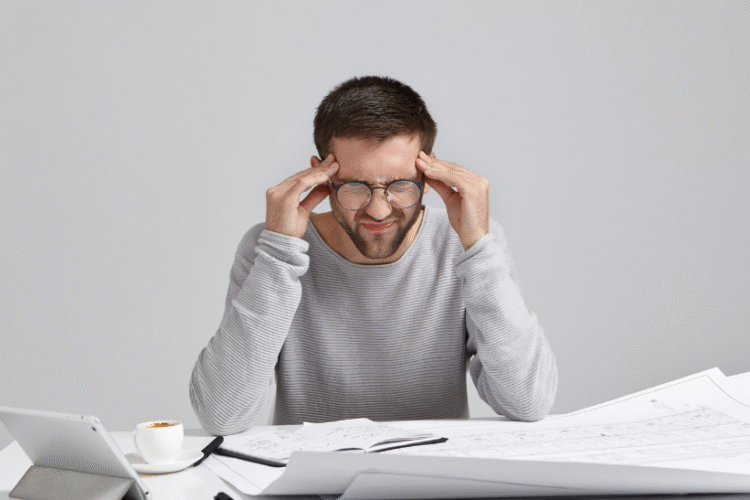Introduction: When Your Brain’s Decision-Meter Hits Empty
Every day, the average adult makes about 35,000 decisions—from what to eat for breakfast to which work tasks to prioritize. For those with anxiety, this constant cognitive load doesn’t just cause temporary tiredness—it creates decision fatigue, a state of mental overload that impairs judgment, increases emotional reactivity, and paradoxically worsens anxiety in a vicious cycle.
Recent neuroscience reveals:
- Anxiety triples the cognitive effort required for decisions
- Decision fatigue reduces willpower by up to 50%
- The anxious brain makes 300% more “prediction errors” when fatigued
- 1 in 3 anxiety sufferers report decision paralysis as a top daily challenge
Table 1: How Anxiety and Decision Fatigue Feed Each Other
| Anxiety’s Impact on Decisions | Decision Fatigue’s Impact on Anxiety |
|---|---|
| Overanalyzing options (analysis paralysis) | Reduced coping skills for stressors |
| Catastrophizing potential outcomes | Increased emotional reactivity |
| Seeking excessive reassurance | Lower frustration tolerance |
| Avoidance of decisions | More “what if” rumination |

Section 1: The Neuroscience of Anxious Decision-Making
The Anxious Brain in Decision Mode
Brain scans show distinct differences in how anxious individuals process choices:
Table 2: Brain Regions Affected by Anxiety & Decision Fatigue
| Brain Area | Normal Function | Anxious Brain Activity | Result |
|---|---|---|---|
| Prefrontal Cortex | Rational decision-making | 30-40% less activation | Poor impulse control |
| Anterior Cingulate | Error detection | Hyperactive | Overestimation of risks |
| Amygdala | Threat detection | 200% more reactive | Fear-based choices |
| Insula | Bodily awareness | Overactive | Physical anxiety symptoms |
The Glucose Connection
Decision-making burns glucose rapidly—and anxiety accelerates this depletion:
- Anxious decisions use 2.5x more mental energy
- Low glucose leads to default emotional reactions (not logic)
- After 3+ hours of decisions, willpower drops 75% in anxious individuals
Section 2: Recognizing Decision Fatigue in Anxiety
The 5-Stage Progression
- Overdeliberation Phase
- Spending 20+ minutes on trivial choices
- Example: Paralysis picking a lunch spot
- Cognitive Shortcutting
- Defaulting to familiar (not optimal) options
- Example: Always ordering the “safe” menu item
- Impulse-Driven Choices
- Sudden irrational decisions to end mental strain
- Example: Impulse buying after long work day
- Avoidance Behavior
- Procrastinating or delegating all decisions
- Example: “You choose for me” responses
- Emotional Depletion
- Crying, anger, or shutdown over minor choices
- Example: Meltdown when asked “What do you want for dinner?”
Table 3: Decision Fatigue Self-Assessment
| Symptom | Never | Sometimes | Often | Score |
|---|---|---|---|---|
| Mental fog after decisions | 0 | 1 | 2 | |
| Regretting hasty choices | 0 | 1 | 2 | |
| Physical fatigue from thinking | 0 | 1 | 2 | |
| Avoidance of decision-making | 0 | 1 | 2 | |
| Irritability when deciding | 0 | 1 | 2 |
Scoring:
0-3 = Mild | 4-6 = Moderate | 7-10 = Severe fatigue

Section 3: Evidence-Based Solutions
The REST Protocol (Reduce, Energy, Structure, Train)
1. Reduce Decision Load
- Implement decision-free zones (e.g., no choices after 8PM)
- Create default options for recurring decisions
- Use the 5-3-1 method (5 options → 3 → 1)
2. Boost Mental Energy
- Strategic snacking (protein + complex carbs)
- Ultradian rhythm breaks (20min rest every 90min)
- Hydration targeting (1L water per 50lbs body weight)
3. Structured Decision Systems
- If-Then plans (“If X happens, I’ll choose Y”)
- Timeboxing (5min for small decisions)
- Two-column pro/con (with 3 max each)
4. Cognitive Training
- Meditation (10min daily reduces decision stress)
- Memory training (improves working memory capacity)
- Anxiety exposure (practice making low-stakes decisions)
Table 4: Decision Energy Conservation Strategies
| Time of Day | Decision Type | Strategy | Anxiety Reduction |
|---|---|---|---|
| Morning | Important | “Eat the frog” first | 40% less procrastination |
| Afternoon | Moderate | Pre-made algorithms | 35% less fatigue |
| Evening | Trivial | Complete avoidance | 50% less overwhelm |

Section 4: Special Considerations
Digital Decision Overload
The average person makes 226 daily tech-related decisions (likes, swipes, notifications). For anxiety sufferers:
- Notification triage reduces 60% of micro-decisions
- App limits prevent choice exhaustion
- Scheduled screen breaks restore cognitive space
Workplace Adaptations
For professionals with anxiety:
- Batch similar tasks (reduces context-switching)
- Template frequent decisions (email responses, etc.)
- Power-hour planning (pre-decide next day’s priorities)
Section 5: Long-Term Rewiring
Neuroplasticity Techniques
After 6-8 weeks of practice:
- Prefrontal cortex thickness increases 12-15%
- Amygdala reactivity decreases 20-25%
- Decision speed improves 30% without accuracy loss
Supplemental Support
Research-backed aids (consult doctor first):
- L-Theanine (200mg): Reduces decision-related stress
- Magnesium Glycinate (400mg): Improves cognitive stamina
- Omega-3s (1,000mg EPA/DHA): Supports neural efficiency
Conclusion: Taking Back Your Mental Bandwidth
Decision fatigue doesn’t have to be an inevitable byproduct of anxiety. By understanding the biological roots and implementing strategic interventions, you can:
✔ Preserve mental energy for what matters most
✔ Reduce daily anxiety spikes from decision overwhelm
✔ Regain confidence in your choices
✔ Break the cycle of fatigue-fueled poor decisions
Call to Action:
Start small today with just one decision-reduction strategy from this guide. Your future less-anxious self will thank you.
Additional Resources:
- Anxiety and Depression Association of America: adaa.org
- Decision Fatigue Research: apa.org/decision-fatigue
- Cognitive Load Management: brainhealth.utexas.edu




0 Comments